#Articles
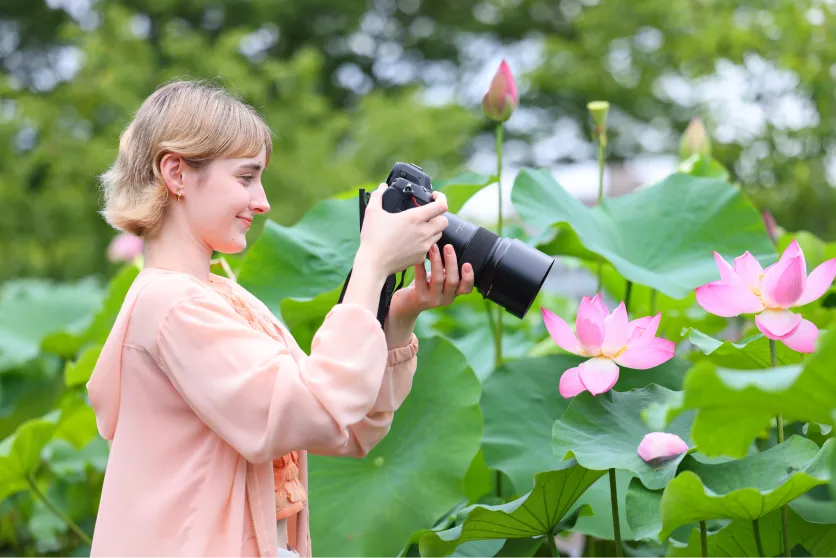
Macro lenses are lenses that allow you to take pictures of small subjects in large size. It can clearly capture the details of insects and flower petals, allowing you to take impressive photographs that emphasize the details of the subject. This article provides detailed information on the characteristics of macro lenses, how to select one, and recommended shooting situations.
What is a macro lens?
A macro lens is a lens specialized for close-up photography (macro photography), which allows you to capture a subject in large size. Generally, it is a prime lens and can produce beautifully smooth bokeh as well as high resolution.
Although there is no strict definition, a macro lens is a lens with a short minimum object distance and a maximum magnification of 1/2 to equal magnification. This allows small subjects and details to be captured in large, photo-filled images.
What is close-up photography (macro photography)?
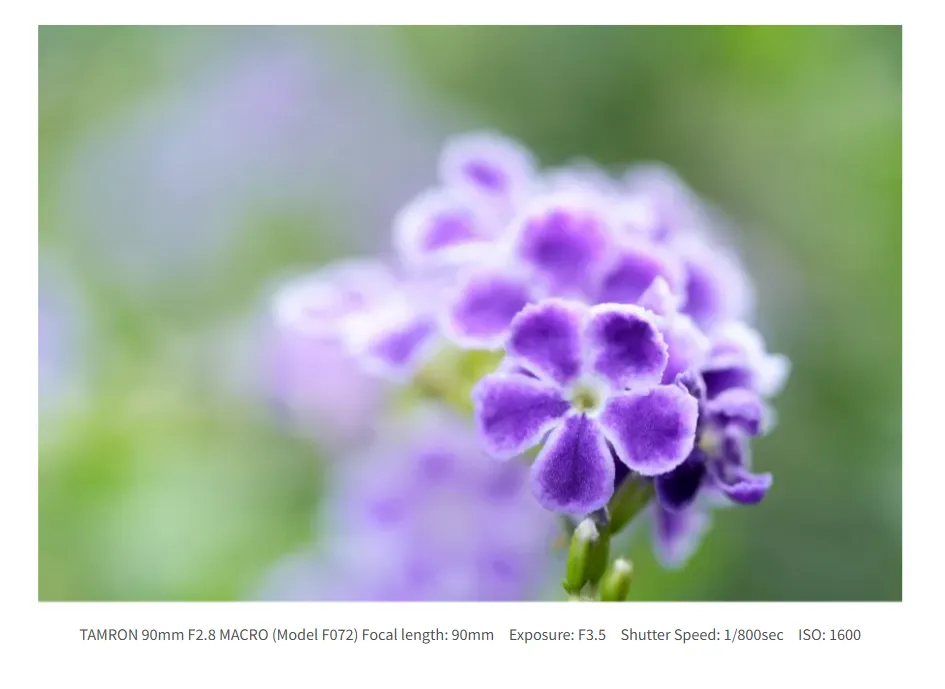
Macro lens characteristics
Macro lenses have several features that distinguish them from ordinary lenses. Here, the maximum magnification, focal length, and minimum object distance are explained in detail.
Maximum magnification
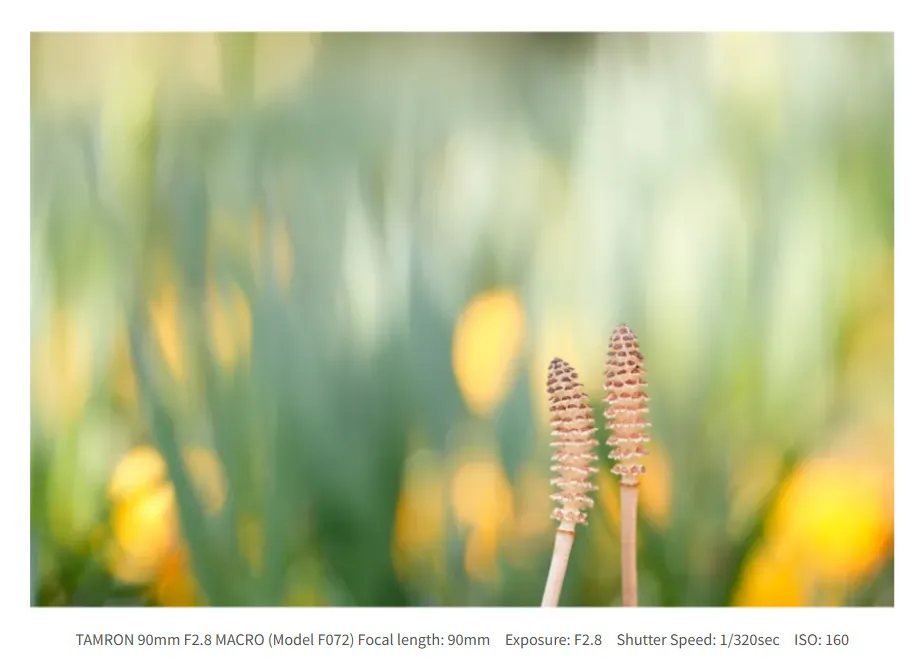
Focal length and minimum object distance
The minimum object distance is the shortest distance between the subject and the camera’s sensor when the subject appears to be in focus. The distance between the subject and the tip of the lens is called the working distance.
Macro lenses are characterized by their shortest working distance, which varies depending on the focal length.
For example, the telephoto macro lens TAMRON SP 90mm F/2.8 Di MACRO 1:1 VC USD (Model F017) has a minimum object distance of 30cm and a working distance of approximately 18cm.
On the other hand, with a standard macro lens, the minimum object distance and working distance are even shorter. For example, when photographing an alert subject such as an insect, a telephoto macro lens is suitable because it is necessary to maintain a certain distance.
Advantages of Macro Lenses
Macro lenses have advantages not found in ordinary lenses. Here are three major advantages.
Able to take large pictures of small subjects
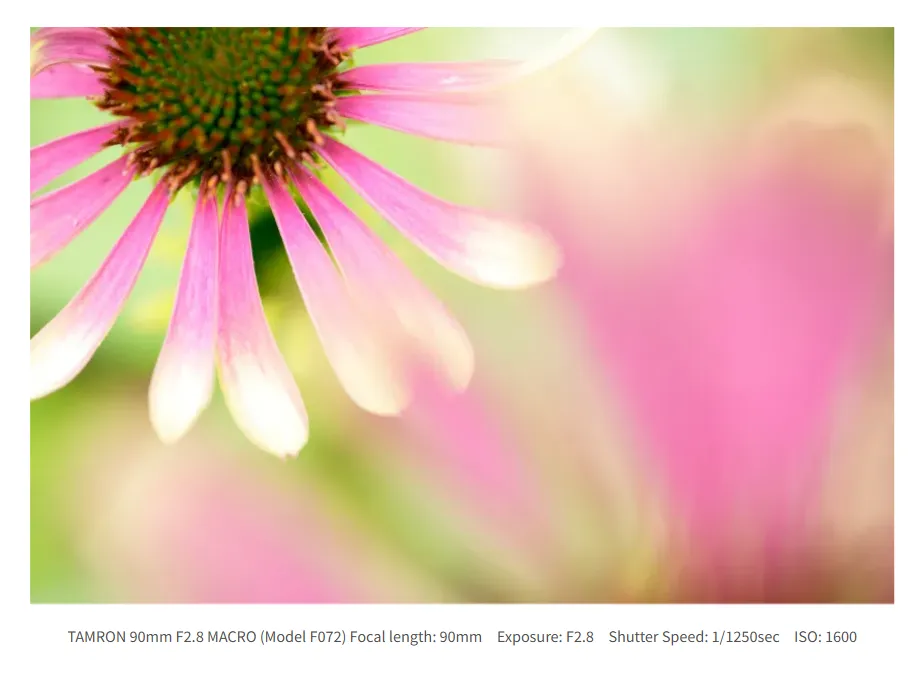
Beautiful and smooth bokeh
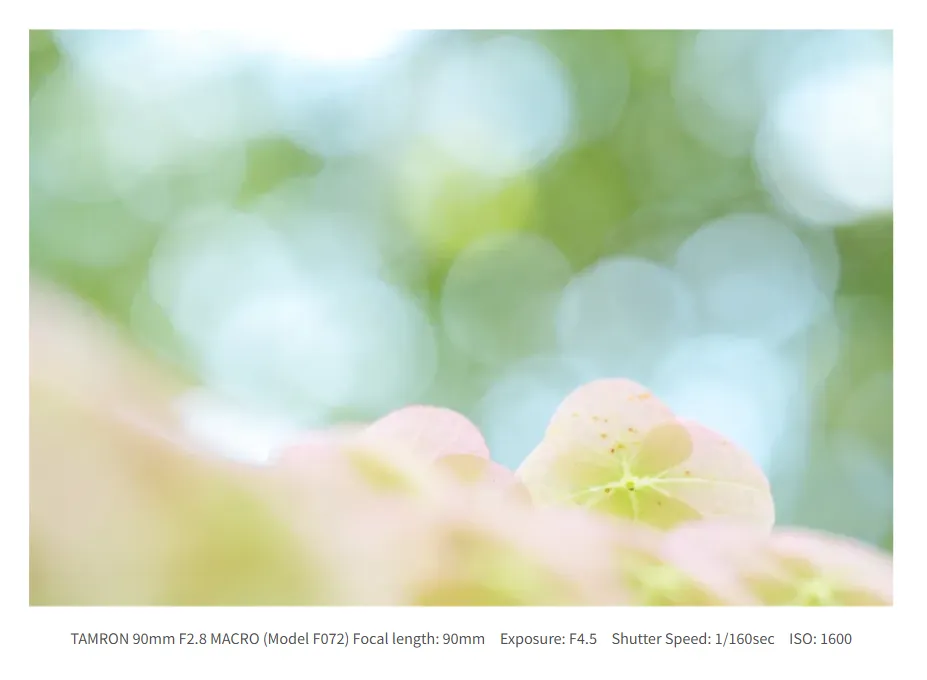
Useful outside of close-up photography
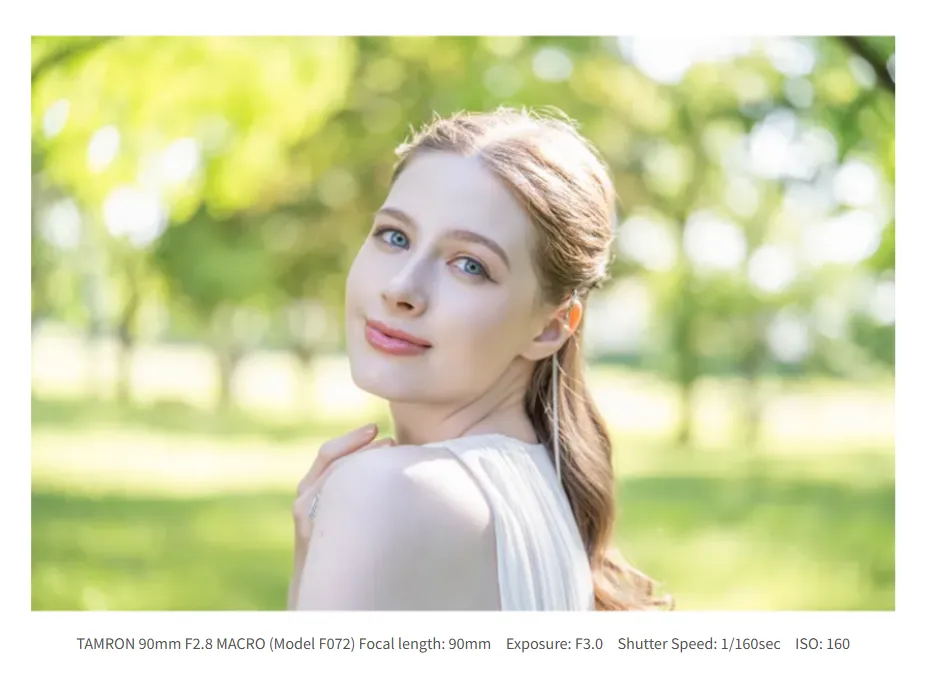
Frequently asked questions about macro lenses
There are probably many things about macro lenses that are difficult to understand, such as the differences from other lenses. Here we will explain the points that beginners are likely to wonder about.
What is the difference between a macro lens and a prime lens?
In general, lenses can be divided into two categories: prime lenses with a prime and zoom lenses with variable focal lengths. Many prime lenses have a small maximum aperture F-number and are bright, making it easy to take pictures with a large bokeh effect.
Macro lenses are basically prime lenses and are designed to provide bright and detailed images even when shooting close-ups. Therefore, although macro lenses are (in most cases) a type of prime lens, they are lenses that specialize in close-up photography performance.
What is the difference between a macro lens and a telephoto lens?
Lenses are classified by focal length into wide-angle lenses (focal length of approx. 35 mm or less), standard lenses (focal length of around 50 mm), and telephoto lenses (focal length of 80 mm or more).
Macro lenses in the telephoto range are called telephoto macro lenses (telephoto macro) and are often distinguished from regular “telephoto lenses.
Telephoto macro lenses combine the characteristics of telephoto lenses, which can capture large images of distant subjects, with high close-up shooting ability, making them suitable for photographing insects and flowers at a distance from the subject.
What is the difference between equal magnification macro and half-macro?
As mentioned above, the main difference between equal magnification macro and half-macro lies in the maximum magnification. With equal-size macro, the maximum magnification is 1:1, meaning that the actual size of the subject and the size of the image on the sensor are the same.
Because of these characteristics, the shooting scenes in which it excels are also different. Equal magnification macro is ideal for capturing large close-up details, such as the structure of insects and flowers.
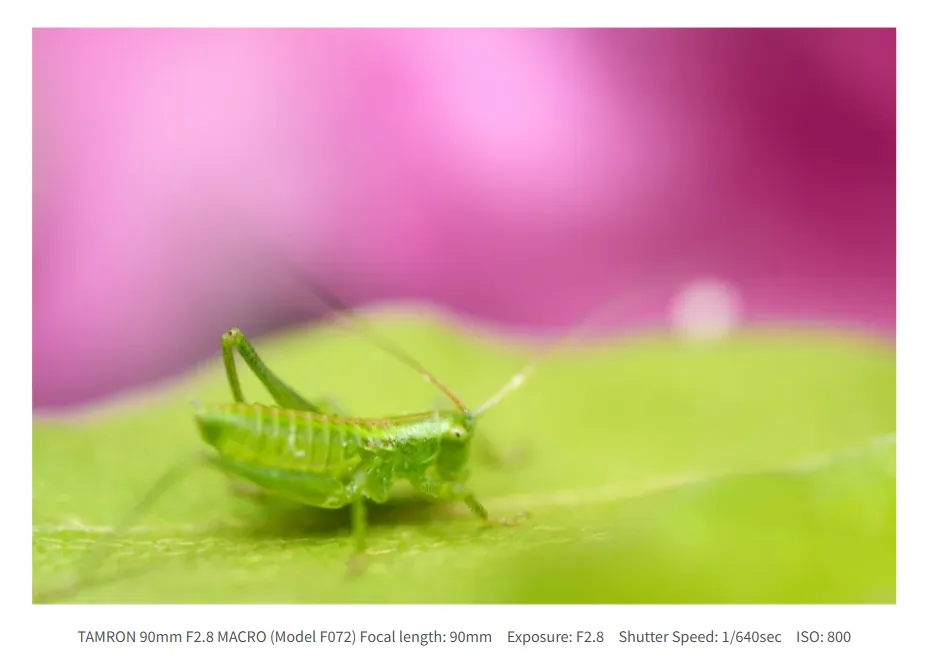

Points for taking pictures with a macro lens
There are several points to take advantage of the features of macro lenses in order to take good pictures. Here are three points.
1) Select the right lens for the subject.
The minimum shooting distance of a macro lens differs depending on the focal length.
Telephoto macro lenses can be used not only for photographing flowers and insects, but also for portraits and landscapes by taking advantage of the blur effect. However, the depth of field is shallow, so you will need to get used to focusing.
On the other hand, wide-angle macro and standard macro lenses allow you to get closer to the subject than telephoto macro lenses, making them suitable for shooting small objects in front of you, table photos, and other situations where your range of movement is limited.
2) Focus on the subject
In macro photography, it is important to keep the subject in focus.
For example, when photographing flowers or insects, open the aperture so that the front and back of the subject are not in focus. This results in a shallow depth of field, allowing you to focus on the central subject. For this reason, you will need to make sure you have a clear point of view on the subject you want to focus on.
It is often difficult to focus when shooting with auto focus (AF), and manual focus (MF) is often necessary. Repeat shooting to become accustomed to MF.
3) Background and composition balance
In macro photography, the subject is emphasized firmly, so compositions that take advantage of sunset compositions and symmetry of the subject are effective. In addition, a contrast in color between the subject and the background blur will create a crisp and impressive photo.
On the other hand, if the background is the same color as the subject, it is easier to create a soft and fluffy atmosphere. The ability to express the same subject in very different ways by balancing the background and composition is one of the charms of the macro lens.
Scenes in which macro lenses are useful
Macro lenses are useful for a variety of subjects and shooting situations. Here are some typical subjects.
Flowers and grasses
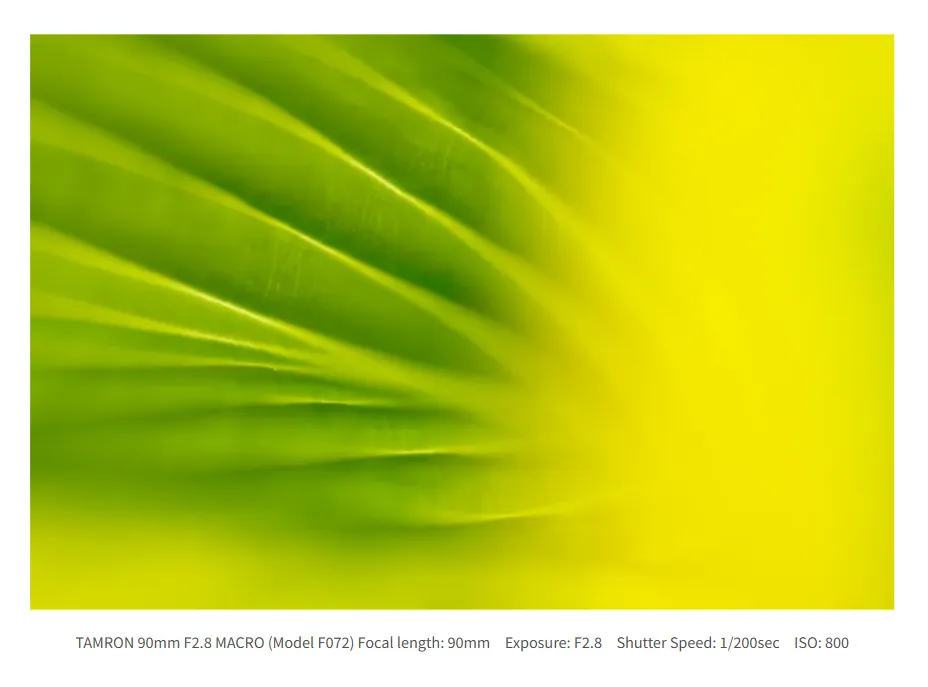
Insects
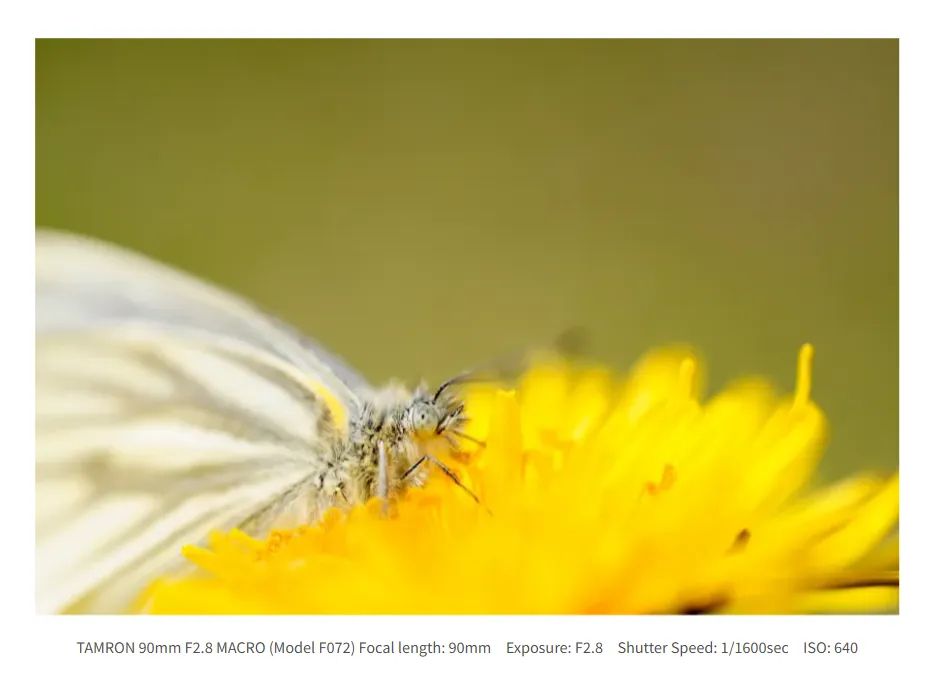
Water drops
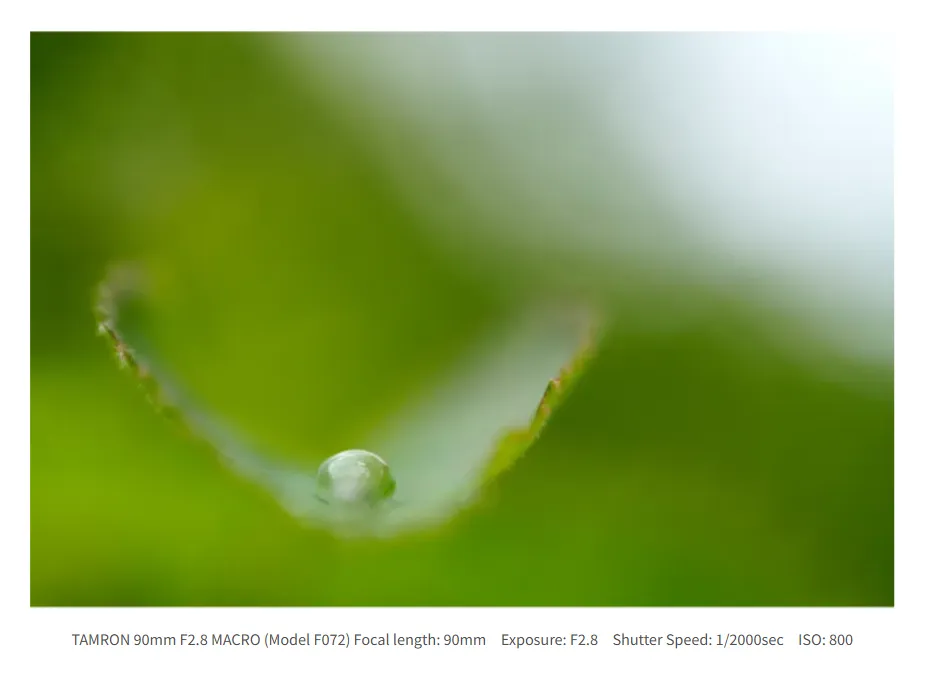
Table photo

Antiques and small objects
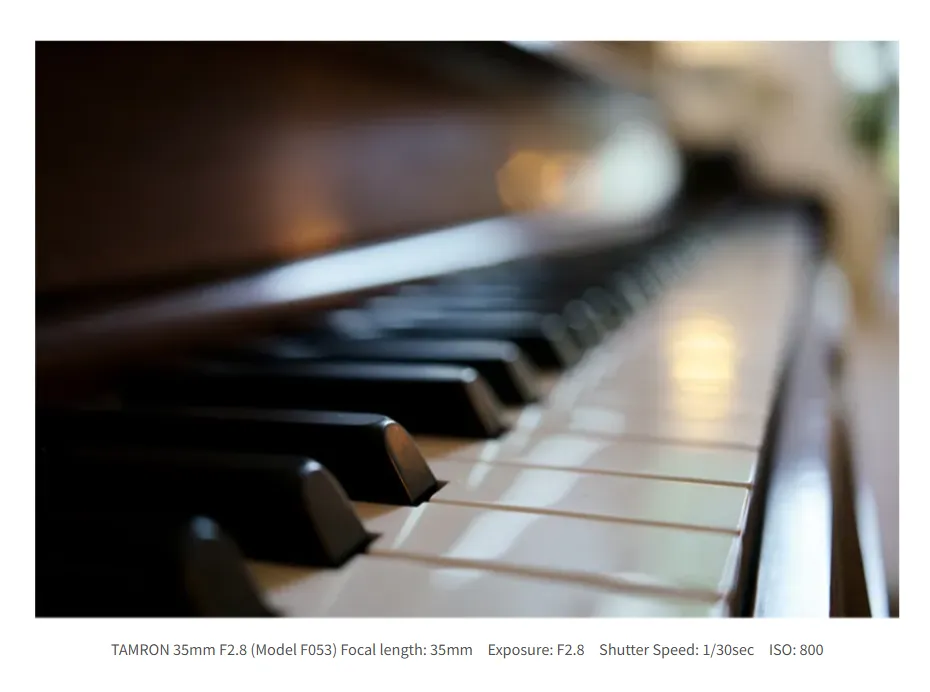
How to choose a macro lens
Here are some points to keep in mind when selecting a macro lens. In addition to the maximum aperture F value, minimum object distance, etc., it is also important to check example photographs.
Resolving performance and bokeh effect
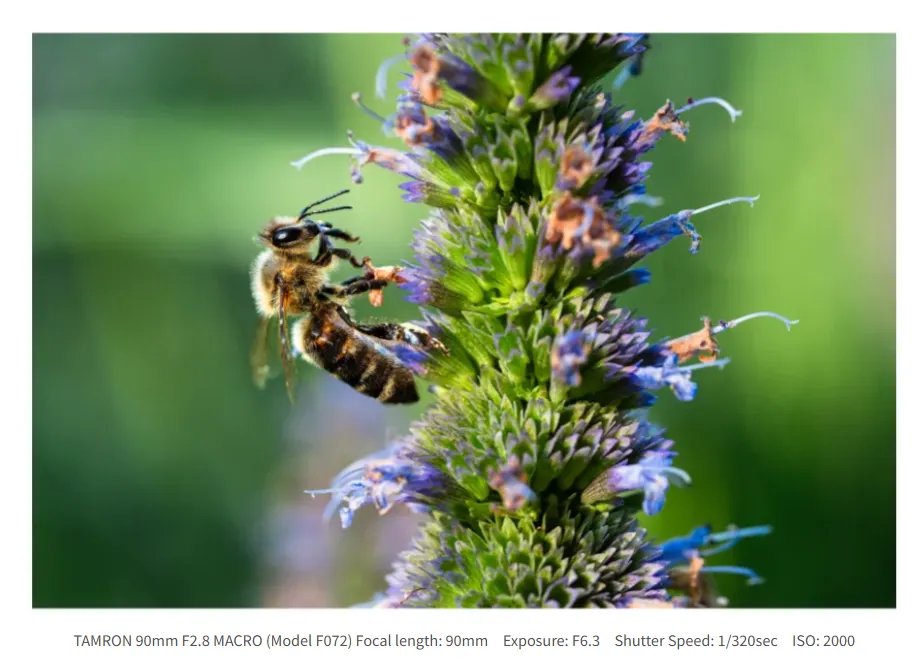
Minimum Object Distance and Maximum Magnification
The shorter the minimum object distance, the closer you can get to the subject. For example, telephoto macro lenses with a focal length of 90 mm are popular for photographing insects and flowers. On the other hand, a standard macro lens is also suitable for table photography and other situations where you want to get even closer in a small space.
An equal magnification (1:1) macro lens is useful for capturing large, precise details, but a half-macro lens with a slightly pulled-back composition can also produce impressive and beautiful works of art.
It is a good idea to check the specifications of the product while imagining the work you want to shoot.
F-number
Small lenses with a maximum aperture of F2.8 or less make it easier to take pictures with large bokeh. Also,
Since it is easier to secure exposure in dark places, such as in the shade or indoors, choosing a lens with the smallest possible maximum aperture F-number will allow you to take pictures in a variety of situations.
Autofocus performance
Macro lenses must be able to focus smoothly and accurately on the central subject, so it is important to check the AF accuracy as well.
On the other hand, since macro photography is often done with manual focus (MF), it is also a good idea to check the operability of the focus ring.
Size and weight
Since macro lenses are often used for outdoor shooting, portability is an important point. Compact and lightweight lenses are easy to carry, and they are less tiring even when shooting for long periods of time.
A lens that is easy to handle makes it easier to take pictures in places where movement is restricted, and it is easier to hold the camera on the desired subject, which naturally increases the number of shots taken.
Moisture-Resistant Construction
In macro photography, you may be shooting in the field or in the rain. If the lens has a Moisture-Resistant Construction, you can concentrate on shooting without worrying about water droplets. In particular, if you often shoot plants or near water, it is a good idea to check if the lens has a Moisture-Resistant Construction.
Let’s explore the fascination of the macro world!
Macro lenses allow you to get close-up on small subjects and capture details in large, precise detail. It is possible to bring out the charm of subjects that you have never noticed before, or to create a painting-like expression by taking advantage of the large bokeh effect. If you want to try something different, pick up a macro lens.

